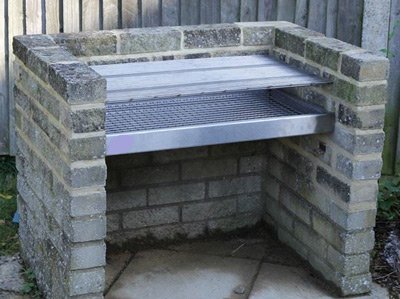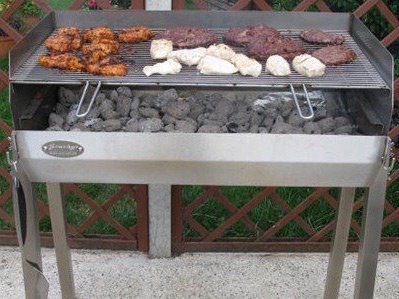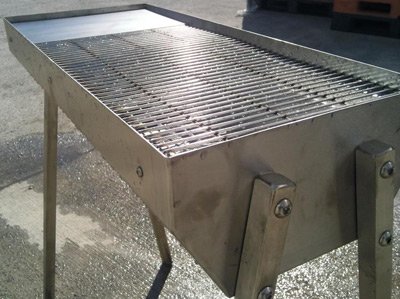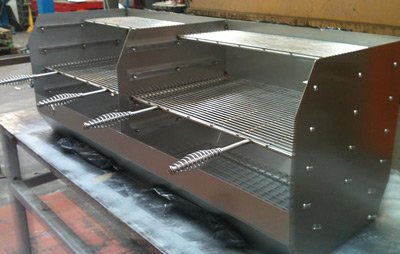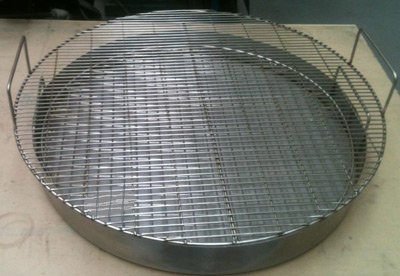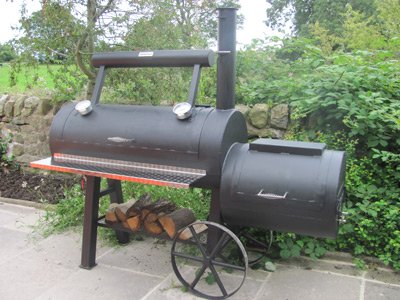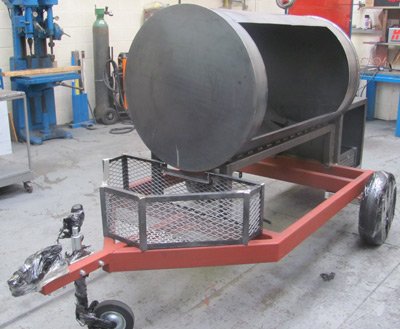Smoker Instructions Manual
by Peter
(UK)
Recently I got a smoker barbecue for my birthday but the instructions don't cover how to smoke the food. Help!
Answer:-
Most smoker instructions manuals cover the assembly of the unit but rarely will you find a smoker instructions manual that actually covers how to set up your smoker. Indeed smoking is an art form as many pitmasters will tell you. There is an element of trial and error and believe me, I’ve made a few errors in my time so don’t be too disappointed if your first attempt isn’t exactly perfect.
It's difficult to write a generic smoker instructions manual because there are so many different types of smoker:-
- Offset smoker
- Kamado Smoker
- Upright Bullet / Cabinet Smoker
In addition there's also so many different ways to fuel a smoker:-
- Wood
- Charcoal
- Gas
- Electricity (including pellets, bisquettes & wood chips)
For the purposes of this discussion I'm going break the process down into 3 steps and cover the basics for each type of smoker above.
This will get you going and no doubt as soon as you've started you'll want to learn more so I'll put some links through the page where you drill down into more detail about each subject.
Note:- As you read on you'll notice that there's a lot more detail for wood and charcoal fired smokers because these are generally the more difficult to control but don't be put off if you're using this article as part of your research for buying a meat smoker because at the end of the day, these units (in my opinion) offer the most fun.
One other point general to this smoker instruction manual is that whenever I refer to wood I'm referring to hardwood and never softwood. For more details on your choice of hardwood, use my section on barbecue wood chips.
Creating Heat
Wood
Typically a wood fired smoker will be an offset smoker ie. the firebox is set to the side of the food chamber. Wood is fantastic, I think it's probably the most difficult to control but there's something rustic about it.
The heat is controlled by the intensity of your fire which in turn is controlled by air flow through the smoker. Regulate this using the damper on the flue and the firebox.
I find that I normally have the flue damper fully open and my heat regulations is purely regulated by the firebox damper.
To get you're fire going I use hardwood kindling and an odour-less firelighter. In the first instance get everything open (dampers, doors lids) and get as much air to your fire as possible.
Your fire is ready when the all the exposed wood has charred and the thick white smoke has turned to a wispy blue colour. You'll be hardly able to see the smoke and probably question whether this is right...but it is, it's perfect. When you reach this stage you can batten down the hatches and start to regulate the temperature using the dampers.
Note:- There must always be some airflow otherwise your fire will die and your smoke will turn stale.
Charcoal
Charcoal smokers come in all shapes and sizes but the principle remains the same. Heat is from the charcoal fire in the bottom of the smoker and smoke is provided by wood chips dropped onto the fire.
You may or may not have a water bath, personally I prefer to use one as it increases humidity and so helps build a pink smoke ring on the meat.
To get your fire going use an odour-less firelighter cube and place some charcoal on top and open the bottom damper to get some airflow through the smoker. You need a decent fire but not such a raging one as you would have in an wood fired offset smoker. You clearly need enough fire to heat the smoker but after that it's about controlling the burn to give a steady flow of smoke from the wood chips and an even heat for the length of time you need.
Gas
By comparison gas is straight forward. Light the
Electricity
Read as gas but rather than lighting the gas burner, just switch on the electrical element and that's it for many electric smokers.
You may however have a pellet smoker and these use wood pellets to provide both heat and smoke. An auger drives a steady stream of pellets from a storage hopper to an electrically heated pan where the burn takes place.
The smoker instructions manual for a pellet smoker is pretty simple...load the hopper with pellets and switch on.
Passing Smoke Over The Food
Your smoker will create smoke in one of a number of ways.
Wood
Your fire is wood so wood smoke is a natural bi-product. The only thing to stress is that you need to wait until the thick white smoke has died down and you're left with blue wispy smoke that's hardly visible to the eye. When you get this smoke it's time to place your meat in the cooking chamber.
Charcoal
Place your chosen flavour of wood chips onto the coals, place some on the coals already burning and more on the un-burnt coals. That way you'll get a steady stream of smoke through the cookout. Some will tell you to soak your wood chips prior to putting them on the fire but I don't bother.
Gas
For gas smokers it's as simple as wood chips onto the lava bricks or the ash pan and let the chips smoulder.
Electricity
Electric heat sources use a variety of systems, it could be as the gas, simply throw some wood chips on to smoulder but your smoker could have a bisquette with automatic feed or a pellet auger system. Whichever of the latter two systems it's pretty much a case of load the feeder and switch on.
Indirect Cooking
Put simply, this means not placing the food that you’re cooking directly over the heat source and this is achieved in a number of ways dependent on the design of your smoker.
Offset smokers have a firebox to the side of the food chamber, other smokers have the firebox directly under the food chamber and serve to separate the heat source either by heaping the coals to one side in the firebox (or making a charcoal ring), an ash pan or (as in the case of kamados) a ceramic plate.
Slow Roasting
In addition to indirect cooking, the challenge here is to cook for a long time at a low temperature. It's this process that breaks down the tough connective tissue in the meat leaving you with a juicy tender end result and mastering this part is a classic example of how practice makes perfect. The temperature in your smoker will be controlled by vents above and below the smoker. The exception here is those smokers fueled by gas or electricity where you'll either have a simple on / off setting or you may have something thermostatically controlled.
Read this next article for more information on smoker temperature control.
The accepted temperature range for cooking low and slow is 110°C (225°F) to 125°C (250°F).
This is one of the critical areas to master and you may find that during your first cookouts you are constantly monitoring and tending. This is normal but you'll soon get the hang of it.
Note:- If you haven't yet bought a smoker you're reading this smoker instructions manual thinking electric is easy and the way to go then read my page on electric smokers...you might just change your mind.
For more information check out the Barbecue Tips page and once you’ve got the hang of it, let us know about your smoker and how you rate its performance in the barbecue grills review.
Who needs a smoker instructions manual now? Just practice, patience and follow the recipes, you'll soon be in the driving seat.
See Also:-
Join in and write your own page! It's easy to do. How? Simply click here to return to Forum.

Charcoal Grills
Stainless Steel Inserts For a Brick BBQ Grill
Adjustable Height Charcoal Grills
Custom Built To Your Specification
Replacement Stainless Steel Cooking Grates
Smokers
Please Help
Keep This Site Free!
Many Amazon merchants pay us a small referral fee when you click this link and purchase from them...
It makes no difference to the price you pay but it really helps me continue improving this website. If you like what I'm doing then save this link and use it every time you go to Amazon. For whatever you purchase through this link (it doesn't have to be barbecue) I heartily thank you in advance.





